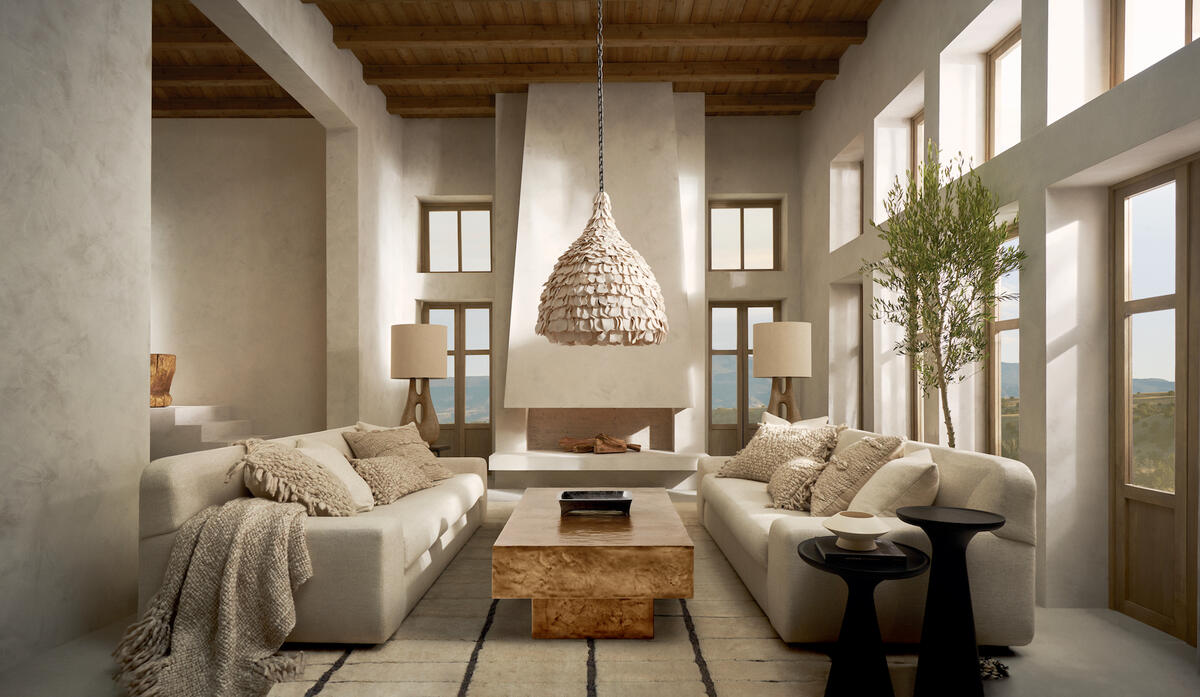It looks like Banana Republic could soon be leaving home.
With the abrupt departure of the apparel retailer’s president Sandra Stangl earlier this week, observers are speculating whether her aggressive plan to move the company into the home business was what pushed her out the door.
The brand, part of the Gap Inc. family, has denied that its nascent expansion into home furnishings was faltering. But in the announcement from company CEO Richard Dickson accompanying Stangl’s departure, there is no shout-out of BR Home—only Banana Republic’s “dramatic shifts to elevate the aesthetic and explore tangential categories that help us imagine the true potential of this brand.” If “tangential categories” means furniture and bedding, that went unmentioned.
The BR Home push seemed to be a cornerstone of Stangl’s strategy for Banana Republic, which has been a weak sister to the namesake Gap, Old Navy and Athleta brands for years. Stangl came on board in December 2020 after stints at RH and Williams-Sonoma, experiences that laid the foundation for her to launch Banana Republic’s home expansion.
The modest introduction last year of bed and bath items was followed up more recently with furniture and more home decor, as well as the opening of standalone BR Home stores in Los Angeles and New York. The company never broke out specifically how its home assortment was performing, but told WWD earlier this year there was no truth to the rumors that the category would be discontinued. In announcing its most recent financial results, Banana Republic’s overall sales were down 2 percent while comp store sales dropped 4 percent. “While the brand has been making progress elevating its aesthetic, reestablishing [it] will take time and there is work to be done to better execute many of the fundamentals,” Gap Inc. said in the earnings statement.
The move into home came as the entire category had slowed down from its pandemic-induced high and as consumers were increasingly looking to spend their money outside their homes. As such, Stangl’s timing was unfortunate.
It’s worth noting that Stangl predates Dickson’s arrival from Mattel last year, and it’s not unusual for new company leaders to want to bring their own people. Gap would only say it was conducting a search for Stangl’s successor.
Banana Republic’s latest home initiative was not the first time the brand has ventured into the category. In the early 2000s, it introduced soft home merchandise like bedding and bath, showing it in selected stores (this being before it began e-commerce). Shoehorned into clothing store–size locations, the home line never really took off and was discontinued several years later, save for the occasional decorative pillow or throw that would turn up from time to time in some locations. Home 2.0 was back in some stores, but clearly online was seen as the prime source of sales.
Both home collections veered toward monochromatic looks that—while in line with the overall Banana apparel aesthetic—offered very little in the way of differentiation from competitors like RH, Crate & Barrel and Williams Sonoma Home.
And of course, the irony remains that years ago Gap had a natural vehicle to get into the home business when it owned a small but promising brand—called Pottery Barn.
____________
Warren Shoulberg is the former editor in chief for several leading B2B publications. He has been a guest lecturer at the Columbia University Graduate School of Business; received honors from the International Furnishings and Design Association and the Fashion Institute of Technology; and been cited by The Wall Street Journal, The New York Times, The Washington Post, CNN and other media as a leading industry expert. His Retail Watch columns offer deep industry insights on major markets and product categories.





























